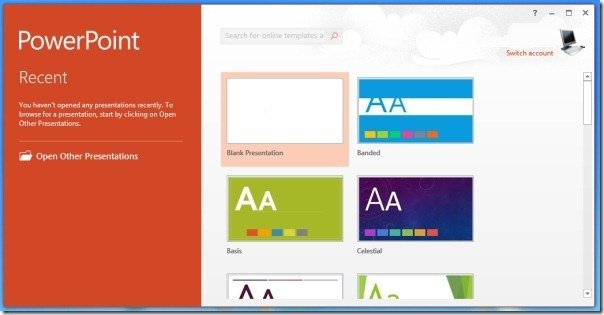

- #Free presentation tools online for free#
- #Free presentation tools online pro#
- #Free presentation tools online software#
- #Free presentation tools online Offline#
That’s still a lot less freeform than many of the other contenders on this list. EmazeĮmaze offers a themes-based approach to quickly creating attractive presentations, with 34 themes to choose from and variations within each theme.
#Free presentation tools online pro#
From a panel that looks a lot like WordPress’ themes options, you can select ‘upgrade’ and get Pro for $19.00 a month or Business for $57.00 a month, and since the basic membership features outros, watermarks and limited graphical options, most users probably will. PowToon integrates seamlessly with Google Slides too.įreemium, basically. And if you want bulletpoints, there’s PowToon Slides.

Yes, the core app sacrifices the extreme clarity of a list of bulletpoints projected behind you, but they gain in watchability, with animated characters and voiceovers. PowToon uses slides for storyboarding and managing, but its presentations are like short films. It’s more focussed on what the company calls an ‘explainer’ style of presentation, offering a fundamentally different attitude from most other presentation applications, which is why it made the list. PowToon is designed to create animated presentations and videos. If you want privacy, you’ll have to pay, starting at $6.00 a month for an individual and rising to $12.00 for a team. Slides is free if you don’t mind all your decks being public. Slides presentations are referred to as ‘desks,’ and these are cloud-based, though they can be downloaded – as well as embedded. It focuses on appearance more than storytelling, so if you’re the kind of person who normally uses three PowerPoint slides but gets annoyed at how dull they look, Slides could be for you. Slides is a browser-based presentation editor with free cloud storage.
#Free presentation tools online for free#
For the most control and interactivity, though, you’ll have to go pro at $8.33 a month.ĭownload SlideDog for free and give it a try! Slides SlideDog is free to use and the free plan even supports brief trials of premium features.


#Free presentation tools online Offline#
While SlideDog was designed as an online presentation tool, it also works offline as long as online elements like Youtube videos aren’t added to presentations. It’s also possible to use SlideDog for online presentations shared via web browser, and the tool incorporates unique interactivity, allowing polls, feedback and more to be built into online presentations. The biggest perk is the simplest: everything shows up in your presentation the way it looked to begin with, with no file type or compatibility issues. It lets users effortlessly combine media from multiple sources into a single presentation, which suits it for conveying complex ideas or for making a presentation more dynamic and fun. SlideDog is more freeform than HaikuDeck. The iOS and web apps are ‘ and will always be’ free, but subscribers to HaikuDeck’s Zuru service pay $60 a year. It’s not as features-packed as others on this list but the company presents that as a benefit, with one reviewer saying it has ‘only the features you’ll actually use.’ It’s been hailed for driving productivity to tablets and excels at allowing users to make simple, clear presentations. HaikuDeck offers slide deck creation on a range of devices. Yes, PowerPoint retains its market dominance for now, but it’s hard to see how it can compete without adapting, faced with the competition here. When tools that will let you make simple presentations on your iPad, allow you to build presentations out of any combinations of media or let you build your presentation as a fun, approachable cartoon, you’re going to look pretty out of place up there with your laser pointer and your bullet points.
#Free presentation tools online software#
Desktop-based, bulletpoint-heavy presentation software can feel like it’s stuck in the last century, and the range of online presentation tools is growing all the time. Increasingly, productivity is moving away from the classic desktop machine.


 0 kommentar(er)
0 kommentar(er)
